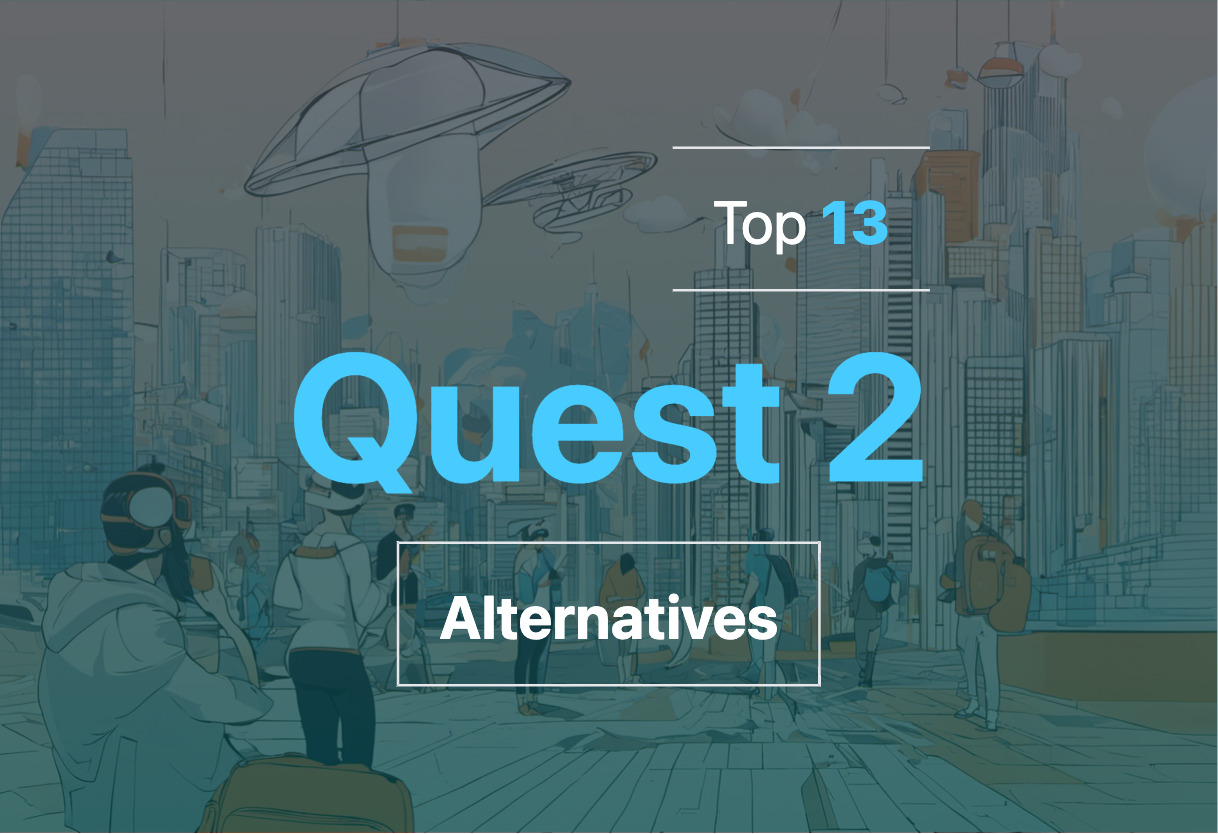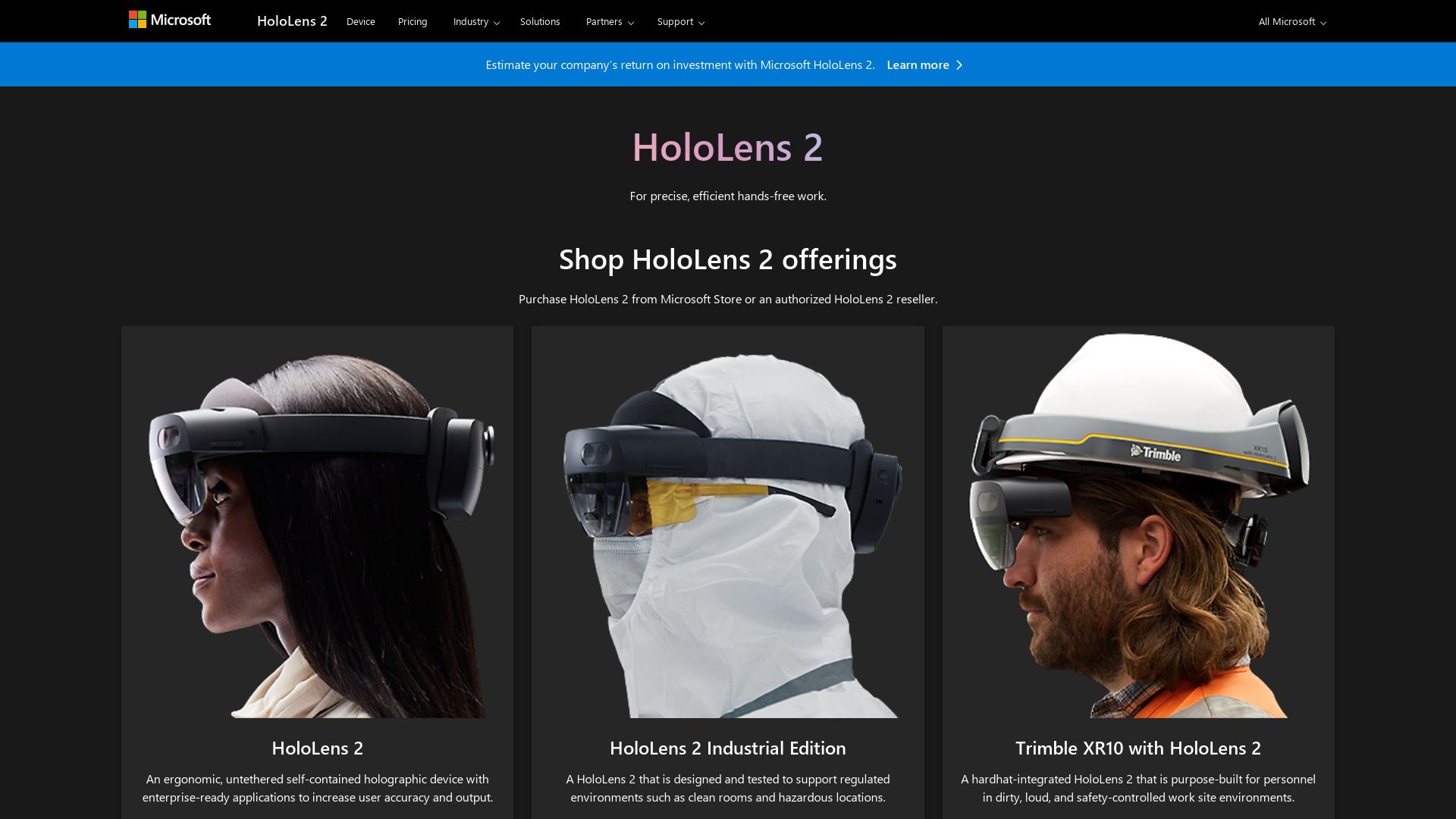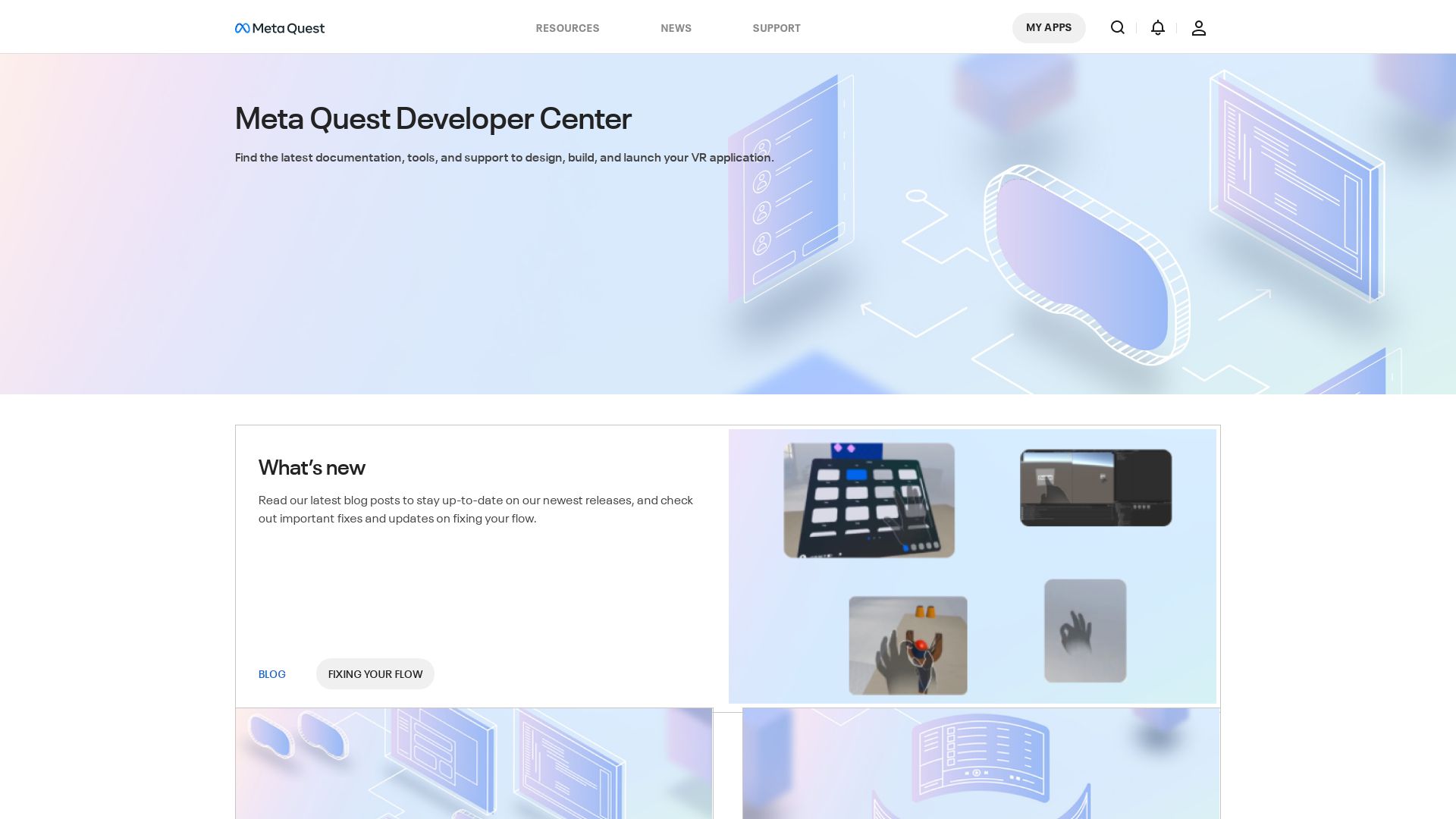Quest 2 is a VR headset by Reality Labs, released on October 13, 2020, featuring Snapdragon XR2, 1832 x 1920 display per eye, and updated Oculus Touch controllers. It supports standalone and Rift-compatible VR software, with a Quest Store for games and experiences.

For those exploring other options instead of Quest 2, choices encompass Quest 3, Quest Pro, Quest 1, Quest, Oculus, Rift S, Oculus Go, Meta, Reverb G2, Valve Index, Index, HoloLens 2.
Meta Quest 3
The Meta Quest 3 is the first of its kind in the market, a revolutionary mixed reality headset. Slated for release in October 2023, it boasts a significant upgrade over the Quest 2.
Standout Features of the Meta Quest 3
- Enriched visual and audio experience: a 30% leap in resolution and 40% louder audio range.
- The Snapdragon XR2 Gen 2, providing twice the graphic processing power as the Quest 2.
- An improved design, slimmer profile, and balanced weight distribution for an enhanced user experience.
| Visuals | 4K+ Infinite Display offering spectacular image quality. |
| Audio | A 40% increase in audio range for immersive audial experiences. |
| Comfort | A redesigned, thinner profile with a soft adjustable strap for all day use. |
Quest 3 Limitations
Every product has its downsides, and it’s essential to consider them. While the Meta Quest 3 delivers impressive specs, it comes with a significant price tag.
| Cost | The initial investment is higher than some alternatives in the market. |
Meta Quest 3 Pricing
Meta Quest 3 is available in two models: 128GB priced at $499.99, and a 512GB model priced at $649.99.
Quest 3 Use Cases
Use case 1: Augmented Reality Gaming
The enhanced visuals, sounds, and improved processing capability offer an immersive gaming experience for AR games like Demeo.
Use case 2: Fitness Training
With applications like Xponential+, the Meta Quest 3 enables interactive fitness training sessions, blending the physical and virtual world seamlessly.
Use case 3: Sports Viewing
Experience the thrill of a live game from the comfort of your living room with Xtadium’s sports-viewing capacity on the Meta Quest 3.
Quest Pro
Enter the new paradigm of mixed-realities with the Meta Quest Pro, an enterprise-focused versatile headset converging the real and virtual realms to catalyze versatile workflows.
Top Features of Quest Pro
- Design: Exuding a professional aura with sleek black chassis, glossy front panel, and a comfortable head strap.
- Advanced Capabilities: Packed with 5 cameras (3 front-facing, 2 side-facing), 2 charging sets, power button, volume rocker, and optional light blocker
- Revamped Controllers: Lighter, redesigned from the Quest 2 controllers, rechargeable batteries, and accompanied by a charging cradle.
- Tech-Packed: Spearheaded by the Snapdragon XR2+ processor (50% more potent than Quest 2), 12GB RAM, and expansive 256GB storage.
- Supreme Resolution: boasting a resolution of 1,920 x 1,800 pixels per eye, a local dimming backlight system, and an enhanced color gamut.
| Software | Empowered with Meta Horizon Worlds and custom interfaces for collaborative work. |
| Setup | Smooth setup with guardian system, full-color pass-through cameras, face, and eye tracking calibration. |
| Extended Features | A slew of reach for AirPods, AirPlay-compatible devices; AirTag, Find My-enabled devices tracking, among others. |
Limitations of Quest Pro
- Unpadded headset pressing against face and peripheral vision exposure.
- Limited consumer-geared software leveraging Quest Pro upgrades.
- Higher cost suited primarily for professional users.
Pricing of Quest Pro
Ideally suited for professionals, the Quest Pro comes with a hefty price tag of $1499.99, three times the Meta Quest 2’s price.
Quest Pro Use Cases
Use Case 1: Collaborative Workspaces
The Quest Pro’s custom interfaces and Meta Horizon Worlds make it a fitting device for fostering collaborative work in virtual settings.
Use Case 2: Advanced Graphic Users
With its Snapdragon XR2+ processor, it becomes an ideal device for users with high graphic performance needs.
Use Case 3: Mixed Reality Professionals
The Quest Pro, combining the real and virtual world, stands as a proficient apparatus for professionals maneuvering mixed reality scenarios.
Valve Index

Bred and brought to life by famed innovator, Valve, the Valve Index graces the AR stage as a second-generation consumer virtual reality headset. Released to the public on June 28, 2019, it made waves with its renderings of virtual realms, impressing 149,000 customers to date.
Valve Index Top Features
- Dual 1440 x 1600 RGB LCDs, offering 50% more subpixels than competing OLED devices for heightened sharpness.
- Frame rates boost of 80/90/120/144Hz, improving visual comfort for elongated immersion.
- The Field of View (FOV) is significantly advanced, blessed with lenses that give 20 degrees more than HTC Vive, with customizable optics for bespoke experiences.
- State-of-the-art off-ear audio solution: no physical contact for supreme comfort with a flexible speaker position.
| Aspects | Value |
|---|---|
| Operating Systems | Windows, Linux |
| Connections | USB 3.0, DisplayPort 1.2, 12V power |
| Controllers | Equipped with 87 sensors for precise hand and finger tracking |
Valve Index Limitations
- Absence of tactile feedback
- Expensive initial and current pricing
- No integrated eye tracking
- Conspicuous audio output
- Frustrating room-scale sensor setup
Valve Index Pricing
Originally released at an introductory price of $999, the headset now retails for $799 independently, with the full kit still poised at the original $999.
Valve Index Use Cases
Use Case 1 – Gaming Enthusiasts
Lover of VR games? Valve Index’s high frame rates and exceptional FOV give players a remarkably immersive and comfortable gaming experience.
Use Case 2 – Technology Connoisseurs
For devotees of cutting-edge tech looking to expand their VR explorations, the Valve Index, with its novel off-ear audio solution and steam compatibility, has much to offer.
Use Case 3 – Content Developers
For content creators, the Valve Index acts as a veritable playground with its expansive VR capabilities and the opportunity for custom additions via the USB 3 Type-A port.
Index
Index, is a highly revered tool best known for effectively gauging the popularity of programming languages. With its progressive IT-driven solution, it has a significant focus on Microsoft’s programming languages.
Index Top Features
- Popularity Tracking: Index provides a visual representation of popularity shifts among programming languages over time. Notably, it drew attention in October 2023 by predicting C# as an emerging language likely to surpass Java within two months.
- Industry Insights: With its evocative analysis, Index plays a pivotal role in tracking notable industry trends. For instance, it pointed to Oracle’s decision to introduce a paid license for Java 8 as negatively impacting Java’s popularity and boosting C# and Kotlin.
- Open Source: Embracing inclusivity in technology, C#, once commercial, has gone open-source and is well-adopted by developers.
| Highlighted Course | Modules |
|---|---|
| Microsoft’s Web Dev for Beginners | JavaScript, CSS, HTML fundamentals, tools, keyboard events, web dev with Canvas API, CSS, multithreading, data structures, debugging |
| No of weeks | 12-week course |
| Course Features | Pre/post lesson quizzes, detailed instructions, solutions, assignments, and projects |
Index Downsides
- The absence of a related content index may make it formidable for beginners to grasp complex pointers.
- Potential indexing issues may comprise low-quality content, website design causing difficulties for indexing, or set robots meta rules that hinder optimal indexing.
Index Pricing
Index is free and open source, making it accessible for a wide range of developers and organizations.
Index Use Cases
Use Case 1 – Programming Language Forecasting
Index is instrumental for organizations aiming to stay ahead of the curve in the programming world. It enables them to predict and effectively adapt to shifts in language popularity.
Use Case 2 – Developer Training and Skills Upgrade
By offering insights into trending languages, Index aids training organizations and independents in deciding which programming languages to focus on for comprehensive and future-forward learning.
Use Case 3 – Comparing and Choosing Programming Languages
For developers who are indecisive about which languages to learn, Index provides precise information about the popularity and future prospects of various languages, facilitating informed decisions.
HoloLens 2

Behold the trailblazing HoloLens 2 by Microsoft, primarily designed with the enterprise user in mind and fortified with a myriad of features focusing on productivity and education, rather than gaming and entertainment.
HoloLens 2 Top Features
- Transparent lenses built onto a visor for an immersive, yet grounded AR experience.
- A Time-of-Flight depth sensor and infrared cameras for solid hand tracking, object anchoring, and eye-tracking.
- Streamlined with a robust Qualcomm Snapdragon 850 processor and 64GB storage.
- Hard-hitting resolution upgrade to 2048×1080 and an increased FOV of 43 degrees.
- Built-in spatial sound and a far-reaching software evolution platform — Microsoft Mesh.
| Hardware Specifications: | Details: |
| RAM: | Reliable 4GB DDR4 RAM. |
| 3-hour Battery Life: | Drops to 2 hours under intense use. |
| Weight: | Comfortable 566 grams, equatable to the Oculus Quest 1. |
HoloLens 2 Limitations
- High price tag of $3500, angling more towards corporate clients.
- Limited gaming and entertainment applications.
- Potential decrease in mobility due to heavier weight than some alternatives (e.g., Oculus Quest 2).
HoloLens 2 Pricing
The cost of HoloLens 2 is significant, with a price of $3500, placing emphasis on its enterprise-level applications.
HoloLens 2 Use Cases
Educational Institutions
The HoloLens 2, with its focus on productivity and education, provides unprecedented opportunities for immersive learning in educational establishments.
Enterprise Industry
Major corporations can leverage the robust feature suite of HoloLens 2, such as its ability to facilitate diverse collaborative experiences through Microsoft Mesh, to amplify productivity.
Military Applications
The comprehensive sensor suite and spatial awareness capabilities of the HoloLens 2 offer pathbreaking applications in military sectors, as proved by its collaboration with the US Army’s IVAS.
Quest 1

Breaking the VR headset mould is the trailblazing platform, the Quest 1. This standalone device, stemming from Oculus, does not connect to phones or PCs, marking an unplugged path in the VR landscape.
Quest 1 Top Features
- Outfitted with the Qualcomm Snapdragon 835 mobile chipset from 2017.
- Presents “arena-scale” VR in a play space of 25 x 25 feet.
- Advanced six-degrees-of-freedom (6DOF) tracking for a deeply immersive experience.
- Next-gen Snapdragon chipset promising more than two times the graphical impact.
- Direct Touch and Hand Tracking support for a touch-free and intuitive interaction.
| Design | Features |
|---|---|
| All-enveloping black fabric exterior sporting the original Rift’s aesthetic | Hardware includes volume rocker, power button, and USB-C charging port. |
| A more comfortable, slimmer design with 40% slim optic profile compared to Quest 2 | Under-the-hood strength with additional storage options for extra space seekers. |
| Improved controllers, slightly revamped versions of the 2016 Oculus Touch | Long-lasting battery that runs between two-three hours |
Quest 1 Downsides
- Potential comfort and control compromises in the base design.
- Limited catalog at launch with only around 50 titles, less extensive compared to Rift.
- Falls back on a relatively older chipset – Qualcomm Snapdragon 835 from 2017.
Quest 1 Pricing
Get the rush of the VR world at $399.99 USD. Not just VR, delve into mixed reality experiences too, all within a single device and an affordable price.
Quest 1 Use Cases
Use case 1: Gaming
The powerhouse of a device performs high-graphics gaming fluidly, ushering in a fresh gaming narrative with its advanced tracking abilities and ‘arena-scale’ VR.
Use case 2: Training and Simulation
From technical equipment handling to flight simulations, the six-degrees-of-freedom (6DOF) tracking in Quest 1 offers an unhinged training ground.
Use case 3: Media Consumption
Turn the average media binge-watching into a truly immersive experience with this innovative standalone device.
Quest 2
The Quest 2 is a VR brainchild from the creative minds at Reality Labs, a division of Meta Platforms. Formerly known as Oculus Quest 2, it embraced a new identity – Meta Quest 2 in 2022. Launched on October 13, 2020, it’s an Android-based VR wizard with a snapdragon for a brain.
Quest 2 Top Features
- Fueled by Android 12.1, backed by Qualcomm SnapDragon XR2 processor.
- Empowered with 6 GB LPDDR4X memory and storage options catering to you with 64GB (though discontinued), 128GB, or even 256GB!
- Showcases visual beauty with an RGB LCD; dishing out 1832 x 1920 per eye at refreshing rates flirting anywhere from 72 to 120 Hz.
- Sporting a 3.5mm headphone jack along with two built-in audio maestros.
| Lighter Design | It’s lighter on your forehead and heavier on features. |
| Flexibility | Be it standalone or in partnership with desktop VR software, Meta Quest 2 gets the job done. |
| PC-less VR | A major shift away from PC-based VR strategy; Meta launched it on steam just a few months post its inception. |
Quest 2 Limitations
- Although sporting an impressive display and refresh rate, it’s retained the original’s short battery life. The VR fun lasts only for roughly 2-3 hours between charges.
- The standard 128GB doesn’t leave room for external expansion. So don’t plan on hoarding every VR title in sight.
Quest 2 Pricing
It retailed at $299 for the 64 GB offering, and if you’re looking for the extravaganza, the 256 GB variant was available for $399. But don’t start fumbling for your wallet just yet because the 64GB version is now discontinued.
Quest 2 Use Cases
Gamers
Quest 2 boasts of its Quest Store — a video game haven hosting dozens of VR games and experiences, making it a no-brainer choice for gamers.
PC-less VR enthusiasts
For the tech lovers who’ve dreamt of a wireless, PC-less VR experience, Quest 2’s standalone ability finally lets them taste freedom.
Future-seekers
And for those of us who are always looking forward to the next big thing, the anticipated successor, Quest 3, promises to take the VR party a notch higher in fall 2023.
Quest
Developed by Oculus, a subdivision of Facebook’s Meta, the Quest VR headset sits proudly within the mainstream appeal, combining standalone design and compelling VR experiences.
Quest Top Features
- Stand-alone Design: Wireless and PC-Independent functionality offering untethered immersion.
- Touch Controllers: Accurate hand tracking for compelling VR experiences.
- Extreme Quality: High-resolution screen (1600 x 1440 pixels per eye) and 120Hz refresh rate for crisp and fluid visuals.
- Qualcomm Snapdragon XR2: Supports smooth, detailed games and experiences.
- Flexible Storage Options: Available in 64GB, 128GB, or a premium 256GB variant.
| Highly Accommodating: | Can remember up to five spaces and automatically swap between them. |
| Access to high-quality VR games: | Compatible with over 500 VR games, inclusive of popular ones like Beat Saber, The Climb, and Robo Recall. |
| Optional PC Tethering: | Enhances the scope of graphically advanced VR. |
Quest Downsides
- Battery Life: Limited to 2-3 hours of uninterrupted use.
- Usage Limitation: Hand tracking feature restricted to certain games.
Quest Pricing
Depending on its storage capacity, the Quest VR Headset ranges in price from $399 to $499.99 for the 128GB variant.
Quest Use Cases
Use case 1
Quest proves useful for gamers looking for immersion without the constraints of a PC or wires, due to its standalone and wireless design.
Use case 2
For tech enthusiasts, Quest offers high-fidelity visuals, Qualcomm Snapdragon XR2 processor, and a vast array of VR experiences.
Use case 3
The Quest is suitable for users seeking convenience and mobility, with features like automatic space swap and a lightweight design.
Oculus
Breathing life into the previously fading VR industry, Palmer Luckey ventured to found Oculus VR. Known for its stunning tech innovation, Oculus released the first realistic and financially accessible VR headset to the masses: The Oculus Rift DK1 in March 2013. A pioneer in VR hardware, Oculus has strived to enhance the user experience with each new iteration.
Top Features of Oculus
- Novel VR technology for realistic experiences at an affordable cost.
- Large stereoscopic field-of-view with over 90 degrees horizontally for an immersive journey.
- Upgraded prototypes featuring 1080p LCD panel for clarity and reduced screen door effect.
| Feature | Description |
|---|---|
| Head Orientation Tracking | Utilizes three-axis gyros, accelerometers, and magnetometers to offer an absolute head orientation tracking without drift. |
| Resolution | Offers an effective resolution of 640×800 per eye, improving the quality of the VR experience. |
| Low-Persistence of Vision | Reduced issues of motion sickness and disorientation in VR, increasing comfort during prolonged usage. |
Oculus Limitations
- VR developments require high developmental cost and technical expertise.
- Possibility of discomfort with prolonged use, similar to early VR models like Nintendo’s Virtual Boy.
- Ended production of the Oculus Rift line in April 2021, potentially limiting future software compatibility.
Oculus Pricing
Oculus pushed the envelope of affordable VR technology, however pricing for specific Oculus products may vary based on the model and vendor. Potential buyers should review the offerings from authorized Oculus dealers for the most accurate pricing.
Oculus Use Cases
Use case 1 – Gaming
From the inception of Oculus, groundbreaking VR technology has propelled the gaming industry towards unprecedented immersive experiences.
Use case 2 – Simulation
Used by professionals in fields ranging from architecture to healthcare, Oculus’ VR solutions allow realistic, risk-free training and simulation scenarios.
Use case 3 – Entertainment
Whether it’s watching films in a virtual theater or embarking on interactive narrative adventures, Oculus unlocks novel avenues for digital entertainment.
Rift S
A brainchild of Facebook Technologies and Lenovo, Rift S is a noteworthy alternative to Quest 2. Launched in 2019, this AR headgear stands as the proud successor to the original Oculus Rift, boasting an improved “inside-out” positional tracking system, and a higher resolution display.
Rift S Top Features
- Increased Resolution: Delivers a display resolution of 2560×1440 (1280×1440 per eye) at a refresh rate of 80Hz, improving image clarity.
- Oculus Insight Tracking Tech: Immersive gaming is a reality with Insight technology, without the need for external sensors.
- 5 Camera Systems: Precise room-scale tracking via 5 built-in cameras (2 front, 1 top, 2 sides).
| Field of View | 115° |
| Integrated Speakers | Yes |
| Compatible Stores | Oculus Store, Viveport store, Steam VR |
Rift S Limitations
- Incremental Upgrade Only: Criticized for being just an incremental upgrade over the original Oculus Rift.
- Ceased Production: Production stopped in June 2021, limiting its availability.
- Increased Weight: Weighs 1.1 lb without cable, adding to the bulk.
Rift S Pricing
Originally priced at $399, the Rift S offers a wealth of features justified by its premium costing. Post-production, the price may vary based on vendors.
Rift S Use Cases
Use Case 1 – High-end Gaming
Rift S, with its higher resolution and immersive gaming experience, is a fine choice for gaming enthusiasts. Its compatibility with Oculus Store, Viveport store, and Steam VR offers a variety of high-end Oculus games.
Use Case 2 – VR Content Consumption
For VR content consumers, the Rift S brings about a life-like experience with its next-generation lens technology and Oculus Insight tracking, alongside access to an expansive game and VR content library.
Use Case 3 – AR Development
Developers aiming for precise movement tracking in their AR applications can leverage the Rift S’s inside-out tracking and room-scale tracking capabilities.
Oculus Go
As a definitive product of collaboration between Meta Reality Labs, Qualcomm, and Xiaomi, Oculus Go emerged as a standalone virtual reality headset. Introduced originally in October 2017, it marked the zenith of Oculus VR’s early ventures in creating a handy, form-factor headset. Although discontinued in June 2020, this device remains a viable alternative when venturing into the domain of augmented reality.
Oculus Go Top Features
- 5.5” Fast-switching LCD display with a resolution of 1280 × 1440 pixels per eye
- Improved Fresnel lenses with a substantial 101 degrees field of view
- Embedded with an Android mobile operating system for swift operations
- Estimated sales: 2 million units sold by July 2019
- Proprietary Oculus Go controller designed to enhance user interaction in-game
| Lightweight Design | Integrated Audio | Connectivity |
|---|---|---|
| The Oculus Go weighs just over a pound, making it comfortable for extended usage. | Built-in speakers and a 3.5 mm headphone jack ensure immersive audio experiences. | Micro-USB and IEEE 802.11ac Wi-Fi facilitate hassle-free connections with your device. |
Oculus Go Limitations
- Limited with non-positional 3-degrees-of-freedom (3DOF) tracking
- Average battery life of 2.5 hours for video and slightly over two hours for games
- Runs on Android 7.0, comparatively older operating system
Oculus Go Pricing
From the vantage point of affordability, the Oculus Go stood out eventually. The price was set as low as US$149 for the 32GB variant and US$199 for the 64GB version, as of January 2020.
Oculus Go Use Cases
Use case 1: Digital Media Consumption
The Oculus Go, with its fast LCD display and integrated audio, excel at providing immersive experiences for watching videos or streaming media.
Use case 2: Gamers
For gamers, the lightweight design and effective Oculus Go controller ensure comfortable and engaging gaming sessions.
Use case 3: Casual Users
The user-friendly approach of Oculus Go, from its interface to its pricing, makes it a great entry-point for casual users.
Meta
Meta Platforms, Inc., formerly known as Facebook, Inc., is a tech conglomerate headquartered in California. Known for its social media and VR offerings, it houses renowned brands like Facebook, Instagram, Oculus, and WhatsApp. With a powerful presence in the global arena, its major emphasis lies in building the ‘metaverse’—an integrated, immersive environment linking all its products and services.
Meta Top Features
- Proprietary VR technology through Oculus brand.
- Revolutionary ‘metaverse’ concept uniting all offerings.
- $150-million investment in immersive learning for next-gen creators.
- VR tools enhancement through Presence Platform for mixed reality experiences on Quest 2.
- Strong online presence with recognized apps like Instagram, WhatsApp.
| Feature | Benefit |
|---|---|
| Oculus | Cutting-edge VR technology for immersive experiences. |
| Metaverse | Unified environment across diverse products and services, revolutionizing social and business interactions. |
| Investment in Learning | $150-million infusion into immersive learning for emerging creators, fostering innovative content development. |
Meta Limitations
- Inherent controversies surrounding privacy and data usage.
- Increased scrutiny post Meta rebranding, affecting profitability in Q4 of 2021.
- Competition with other Big Five American IT companies.
Meta Use Cases
Use case 1: Social Media Market
Meta’s suite of social media apps like Facebook and Instagram offers a vast audience reach, ideal for businesses and marketers seeking immense visibility and consumer engagement.
Use case 2: Gaming and Entertainment
The Oculus brand revolutionizes gaming and entertainment experiences, providing immersive VR capabilities and enhancing user interactions.
Use case 3: Corporate Learning
The extensive investment in immersive learning programs paves the way for innovative training solutions, equipping businesses with advanced learning tools.
Reverb G2
Enter the world of virtual reality with the Reverb G2, HP’s consumer headset, tailor-made for Microsoft’s Windows Mixed Reality platform. This unique gadget is a polished version of the 2019 Reverb, boasting improvements in both comfort and motion tracking.
Reverb G2 Top Features
- 2160 x 2160 resolution per eye, offering sharp, clear visuals
- External cameras for motion tracking, eliminating the need for additional sensors
- Memory-foam facemask for enhanced comfort
- Seamless compatibility with SteamVR and Microsoft’s Windows Mixed Reality platform
- Upgraded motion controllers included for higher game play accuracy
- Easy installation via the Windows Mixed Reality portal
| Specs | Description |
|---|---|
| Display | Two LCD displays, each with a 2160 x 2160 resolution |
| Refresh Rate | Offers a smooth 90Hz refresh rate |
| Hardware Requirements | Requires an Intel Core i5 CPU and Nvidia GeForce 1080 or AMD Radeon 5700 GPU |
Reverb G2 Limitations
- Can experience minor hiccups with the camera-based motion tracking, occasionally affecting controller movements
- More costly and lower resolution than Oculus Quest 2 and Valve Index, although it delivers the sharpest picture in its price segment
- Incompatibility with Windows Mixed Reality platform can sometimes occur
- Demands a powerful PC for peak performance
Reverb G2 Pricing
Though not as state-of-the-art as Valve Index ($999) and HTC Vive Pro 2 ($799), the Reverb G2 offers value for money at a competitive price of $599.99, higher than the standalone Oculus Quest 2. It’s specifications and performance are also a level above the HTC Vive Cosmos priced at $699.99
Reverb G2 Use Cases
Use case 1
Reverb G2 is perfectly equipped for gamers, offering compatibility with numerous titles like Aim Lab VR, Nvidia VR Funhouse, Project CARS Pagani Edition and VRChat. Its upgraded motion controllers and superior resolution ensure an unforgettable VR experience.
Use case 2
From designing to training, the Reverb G2’s high-resolution display and easy tracking make it the perfect match for professionals seeking a lifelike augmented reality experience.
Use case 3
Equipped with a memory-foam facemask, the Reverb G2 is an ideal choice for those seeking a comfortable AR experience during extended use. Its easy setup via the Windows Mixed Reality portal also adds to its user-friendliness.
Patrick Daugherty
Content writer @ Aircada. Merging AR expertise with a love for late-night gaming sessions.





